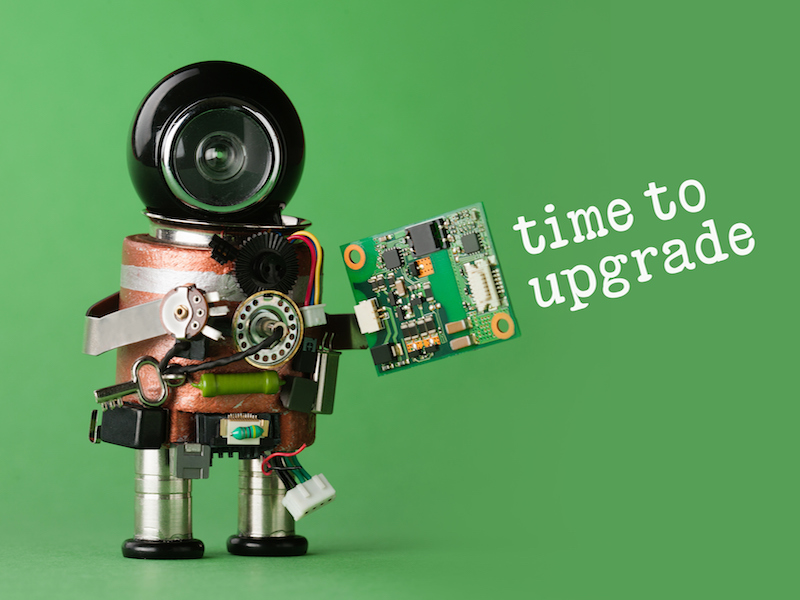If you find yourself wielding a traditional ear trumpet, it’s evident that an upgrade is long overdue. The decision to transition from conventional hearing aids, however, can be more intricate. How does one discern the right time? After all, if your hearing aids are a decade old and still functional, isn’t that sufficient?
While it is accurate that aging hearing aids offer some benefit, the associated advantages often come at a price. Over the past several years, hearing aid technology has progressed remarkably. Evolving from analog to digital, modern devices incorporate features that were merely conceptual a decade ago. Consider several reasons that necessitate contemplation of an upgrade.
Reliability Concerns
Aging or subpar hearing aids can manifest troublesome issues, such as intermittent buzzing or intrusive feedback, especially when in close proximity to phones. At times, unexpected high-pitched feedback can emerge, posing the question: what triggered it this time? These drawbacks are associated with outdated hearing aids. A decade ago, the primary focus was volume amplification. Today, cutting-edge hearing aids employ advanced techniques like noise filtration, rendering the hum of an air conditioner obsolete.
Acclimation to Deficiencies
An individual may have grown accustomed to enduring moments of self-imposed solitude amidst group conversations, or even pondering why the air conditioning seems excessively loud. Recall the instance when your grandchild performed a delightful school song, yet every other word remained elusive due to erratic performance of your hearing aids. These scenarios typify the limitations of outdated devices. A decade ago, amplification was paramount; today’s advancements address intricate auditory nuances, ensuring a richer experience.
Financial Considerations
Cost is invariably a pivotal consideration in the realm of hearing aid upgrades. While contemporary technology carries a price tag, the expenditure of persisting with outdated aids can be equally significant. Analog devices necessitate frequent battery replacements. If daily or more frequent battery changes are your norm, the cumulative cost becomes noteworthy. Furthermore, antiquated devices are more susceptible to requiring repairs, inducing expenses akin to maintaining a vintage car in a garage.
Incorporation of Smart Technology
Modern hearing aids often integrate Bluetooth capabilities, an element lacking in analog counterparts. Bluetooth integration facilitates compatibility with smartphones, computers, and potentially even televisions (unless the latter are equally antiquated).
Enhanced Communication and Quality of Life
Research underscores the link between hearing loss and reduced earnings. Consequently, upgraded hearing aids can be regarded as an asset to one’s career trajectory. Enhanced auditory acuity facilitates effective communication with superiors and clients. Clarity in directives is restored, negating uncertainty. Improved communication not only bolsters professional prospects but also augments overall quality of life. The transformation from passive observer to engaged participant in conversations is empowering.
Elevated Aesthetic Appeal
A pivotal facet of upgrading hearing aids is the opportunity to embrace style and versatility. Modern devices come in various shapes, sizes, and colors. Whether concealed snugly within the ear or showcased boldly in a preferred hue, contemporary hearing aids transcend the confines of their predecessors.
Indicators of Imminent Upgrade
Awareness of when an upgrade is warranted is crucial. Certain telltale signs signal that the time has arrived:
- Hearing deterioration persists despite utilizing the existing hearing aid.
- Lifestyle changes have rendered the hearing aid inadequate. Removal for phone conversations, or challenges posed by increased background noise, are indicative.
- Frequent interruptions or disruptions in hearing aid function have emerged.
- The device’s analog nature is confirmed, warranting a swift transition to digital technology.
- The hearing aid feels cumbersome, symbolizing outdated, bulky technology.
- The device dominates one’s reflection, occupying excessive visual space.
- Daily battery replacements are the norm, in contrast to contemporary energy-efficient models featuring rechargeable batteries.
The decision to upgrade hearing aids, if held for more than seven years, warrants serious consideration. A realm marked by evolving technology and optimized functionality awaits those who seek to embrace improved auditory experiences.


